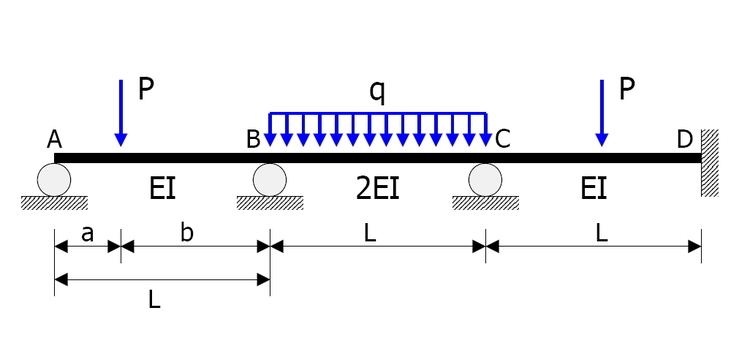 | ||
The slope deflection method is a structural analysis method for beams and frames introduced in 1914 by George A. Maney. The slope deflection method was widely used for more than a decade until the moment distribution method was developed. In the book, "The Theory and Practice of Modern Framed Structures", written by J.B Johnson, C.W. Bryan and F.E. Turneaure, it is stated that this method was first developed,"by Professor Otto Mohr in Germany, and later developed independently by Professor G.A. Maney". According to this book, professor Otto Mohr introduced this method for the first time in his book,"Evaluation of Trusses with Rigid Node Connections" or "Die Berechnung der Fachwerke mit Starren Knotenverbindungen".
Contents
Introduction
By forming slope deflection equations and applying joint and shear equilibrium conditions, the rotation angles (or the slope angles) are calculated. Substituting them back into the slope deflection equations, member end moments are readily determined. Deformation of member is due to the bending moment.
Slope deflection equations
The slope deflection equations can also be written using the stiffness factor
Derivation of slope deflection equations
When a simple beam of length
Rearranging these equations, the slope deflection equations are derived.
Joint equilibrium
Joint equilibrium conditions imply that each joint with a degree of freedom should have no unbalanced moments i.e. be in equilibrium. Therefore,
Here,
Shear equilibrium
When there are chord rotations in a frame, additional equilibrium conditions, namely the shear equilibrium conditions need to be taken into account.
Example
The statically indeterminate beam shown in the figure is to be analysed.
In the following calculations, clockwise moments and rotations are positive.
Degrees of freedom
Rotation angles
Fixed end moments
Fixed end moments are:
Slope deflection equations
The slope deflection equations are constructed as follows:
Joint equilibrium equations
Joints A, B, C should suffice the equilibrium condition. Therefore
Rotation angles
The rotation angles are calculated from simultaneous equations above.
Member end moments
Substitution of these values back into the slope deflection equations yields the member end moments (in kNm):
